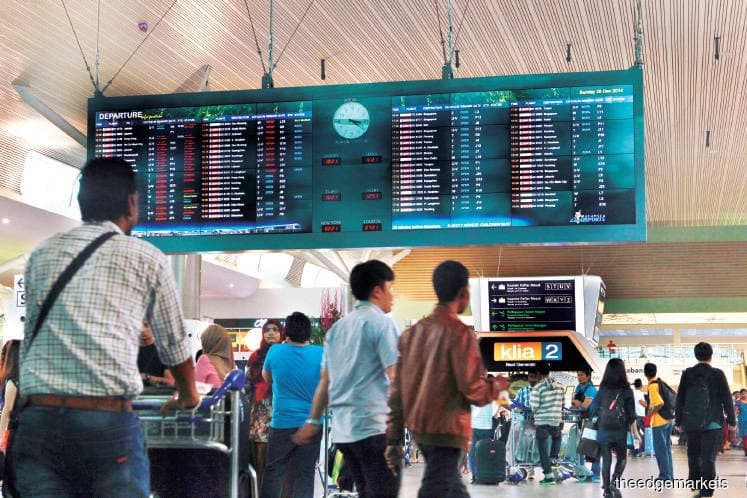
This article first appeared in The Edge Financial Daily on January 6, 2020
KUALA LUMPUR: Competition in the aviation industry is expected to return to a more reasonable level in the new year, but analysts remain concerned about the industry, given increasing pressure on yield and regulatory uncertainties.
Notwithstanding the headwinds, 2020 is seen as pivotal for the local aviation sector.
Because, if it has the right policies and support put in place, the year could see Malaysia and its struggling airline sector head towards a brighter future, said Sobie Aviation analyst Brendan Sobie when contacted. Otherwise, the aviation industry could face further deterioration.
“I maintain my view that Malaysia is at a critical juncture in terms of aviation and the government needs to make the right high-level decisions, put in place the right policies, and relook its national aviation strategy in order for opportunities to be unlocked,” he said.
Malaysia’s aviation market, Sobie said, grew by about 5% in 2019. While it represents an acceleration compared to the 3% achieved in 2018, it is still well below the 10% achieved in 2017.
“A lack of profitability is a major concern with all six of Malaysia’s airlines being loss-making in 2019,” he said.
Sobie noted that the growth in 2019 was driven by the domestic market, which grew by about 10% — the strongest domestic growth recorded since 2013.
“This domestic growth, unfortunately, occurred at the expense of profitability. AirAsia Malaysia pursued aggressive domestic expansion, which impacted domestic yields for all competitors and drove AirAsia Malaysia into the red overall.
“AirAsia Malaysia has slightly over half its capacity in the domestic market, so it relies heavily on its domestic operation, which in prior years was profitable,” he said.
International passenger growth was only about 3% in 2019, Sobie said, noting this represents the slowest growth since 2015.
“Tourism has underperformed, with visitor numbers up by a roughly similar amount (3%). Malaysia needs to step up its efforts to attract more tourists,” he said.
Independent aviation analyst Mohshin Aziz, meanwhile, said it was as if airlines had endured a “full-blown crisis” in 2019, given that their earnings were weaker than 2014 — when the country’s aviation industry witnessed the unforgettable twin tragedies involving the flights of Malaysia’s national carrier, Malaysia Airlines Bhd, which was known as Malaysian Airline System Bhd then.
“We had expected the market would be tough in 2019, but it was tougher than we expected. With higher capacity, a lower load, softer yield and seat prices, it was not a good combination,” he said.
“Unit cost has improved marginally, but not enough to offset the decline in yield. Therefore, most airlines suffered losses in 2019, including AirAsia Group Bhd in the third quarter. For AirAsia to make a loss in Malaysia was actually mind-boggling ... it was as if it was facing a full-blown crisis,” he added.
AirAsia Group’s share price settled at RM1.70 on Dec 31, down 14.5% from a year ago, giving it a market capitalisation of RM5.68 billion. For Malaysia Airports Holdings Bhd (MAHB), Mohshin, who was formerly an analyst at Maybank Investment Bank, said while passenger traffic will still grow in 2020, lack of regulatory certainty will continue to haunt the airport operator.
“The true value of MAHB cannot be realised due to regulatory uncertainties,” he said. MAHB’s share price sank 7.6% in 2019. It closed at RM7.60 on Dec 31, giving it a market capitalisation of RM12.61 billion.
Meanwhile, an analyst who spoke on condition of anonymity explained that competition is expected to ease in 2020 because of the RM800 million injection of taxpayers’ money into Malaysia Airlines.
“The cash injection from the government reduces the pressure for Malaysia Airlines to discount air fare, so we expect fares to be better in 2020; yield should see some mild growth, but international travel [volume] is still uncertain. People are just more cautious,” said the analyst.
New departure levy seen impacting travel demand; Mavcom-CAAM merger to watch
Sobie, who was formerly the chief analyst at CAPA — Centre for Aviation, said the Visit Malaysia 2020 campaign is a positive step but it remains to be seen how much of an impact it will have on the overall numbers.
“The new departure tax is a deterrent and impacting demand for travel to/from Malaysia. The right policies need to be in place to encourage air transport growth — which in turn drives overall economic growth.
“For now, I expect overall passenger growth in 2020 to be similar to 2019 — roughly 5%. There will likely be faster domestic than international growth once again, particularly in the first half of 2020.
“Malaysia should encourage faster international growth by reviewing taxes and policies. This would improve the overall environment for its airlines, which I’m afraid will likely continue to be unprofitable in 2020,” he said.
Sobie also said the country’s recent downgrade by the US Federal Aviation Administration to Category 2 (Cat 2) is a concern. While the Cat 2 air safety status should not have much of an impact on Malaysia’s passenger traffic, he said it sends a negative message and points to broader outstanding issues.
“As I’ve said before, it is too early to say whether merging Mavcom (Malaysian Aviation Commission) into CAAM (Civil Aviation Authority of Malaysia) will be positive or negative. It’s certainly yet another thing to watch carefully in 2020, which could be seen as a year of transition for Malaysia’s aviation sector,” he added.